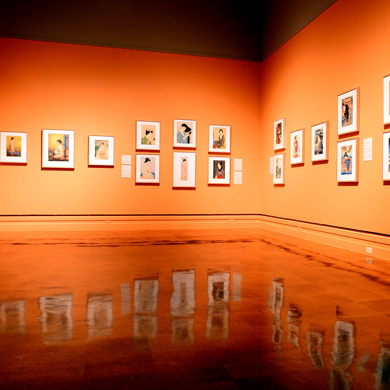 back
back
The woodblock prints that graced the walls of Canaday Gallery for Fresh Impressions: Early Modern Japanese Prints were as pristine as when they first appeared at TMA in 1930. But in the intervening eight decades, they had grown vastly in significance. “Over the years, collectors and scholars from around the world have come to Toledo to see these works firsthand,” said Carolyn Putney, TMA’s chief curator, who specializes in Asian art. Their significance prompted Putney to reassemble the historic 1930 Toledo Museum of Art exhibition they first appeared in, re-introducing audiences to the shin hanga (“new prints”) movement in Japanese art. Inspired in part by European Impressionism, shin hanga incorporated Western aesthetics and a vivid, modern color sensibility while focusing on traditional Japanese print subjects like landscapes (fūkeiga), famous places (meishō), beautiful women (bijinga), actors (yakusha-e), and birds and flowers (kachōga).


Fresh Impressions also celebrated another noteworthy aspect of the Museum’s history: one of its earliest female curators, Dorothy Blair. A pioneering authority on Asian art and culture in a field dominated by men, Blair played a critical role in popularizing modern Japanese woodblock prints in the U.S. Her legacy came full circle when the black-and-white catalogue she authored to accompany the 1930 show, known to scholars as the “shin hanga bible,” was expanded in 2014 to accompany the Fresh Impressions show. Produced in stunning color, the new edition won multiple awards, including best exhibition catalog from the Ohio Museum Association and a bronze in the fine art, national category at the 18th annual Independent Publishers Book Awards. See the catalogue.

The culmination of the Museum’s immersion in Japanese art and culture came with the reinstallation of its netsuke collection, one of two great public collections in North America. The tiny treasures—kimono accessories that were akin to iPhone cases for the way they showed off their owner’s personality in 17th and 18th century Japan—were displayed in their entirety in a gallery adjacent to Fresh Impressions. The collection came to the Museum due to the generosity of several donors over the last 100 years, but are largely credited to one avid collector and Museum donor—Toledo native Richard Silverman.